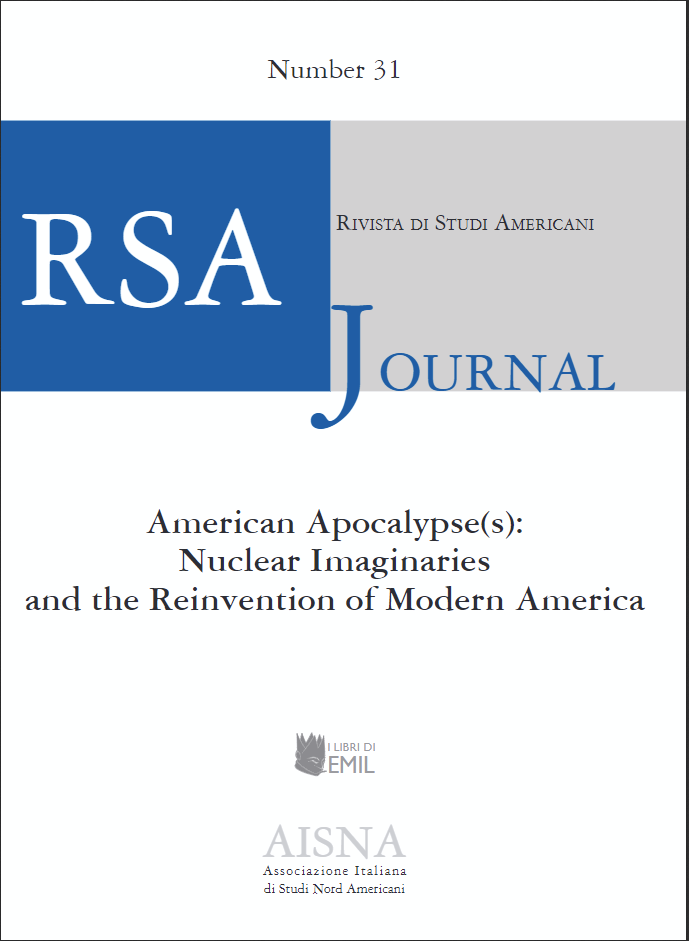Southern Wastelands
“Alas, Babylon,” “The Road,” and the A-Bomb in the Garden
DOI:
https://doi.org/10.13135/1592-4467/8497Parole chiave:
dystopian, wasteland, post-atomic, American SouthAbstract
The southern United States have historically been depicted as a quintessential American Eden. In foundational works like John Smith’s Generall Historie of Virginia and Thomas Jefferson’s Notes on the State of Virginia the southern states elicit comparison with a luxuriant natural paradise and, after Jefferson’s treatise, an eco-democratic utopia. Not until recently literature has adopted the region as a post-apocalyptic locale, with some (still sporadic) examples in which the image of the garden has been replaced with that of a deathscape. When it comes to specifically post-atomic backgrounds, instances are even scarcer. About the only novels that investigate the collapse of the South’s Edenic imagination through bomb-related scenarios are Pat Frank’s Alas, Babylon and Cormac McCarthy’s The Road. While Frank’s novel is a classic (and stereotypical) Cold-War apocalyptic novel from the 1950s, McCarthy’s re-inscribes that psychological atmosphere into a contemporary ecological, existentialist, and political narrative, reviving the A-Bomb milieu without making any clear reference to an actual atomic aftermath. Drawing equally from postapocalyptic culture, social criticism, and the theory of narrative spaces, this essay compares these two depictions of the American South as a dystopian post-atomic wasteland in order to map the evolution of southern literature’s relationship with the bomb.
##submission.downloads##
Pubblicato
Fascicolo
Sezione
Licenza
Avviso sul Copyright
RSAJournal applica una licenza CC BY-NC-ND a tutti i suoi contributi. Questa licenza consente agli utenti di copiare e distribuire il materiale in qualsiasi supporto o formato solo in forma non adattata, per scopi non commerciali e a condizione che venga esplicitato/a l'autore/autrice dell'opera. CC BY-NC-ND include i seguenti elementi:
- BY: L'autore deve essere riconosciuto come tale.
- NC: Sono consentiti solo utilizzi non commerciali dell'opera.
- ND: Non sono consentite opere derivate o adattamenti dell'opera.
Gli autori che pubblicano con questa rivista accettano i seguenti termini:
- Gli autori conservano il copyright e tutti i diritti di pubblicazione per i loro contributi alla rivista.
- Gli autori concedono alla rivista il diritto di prima pubblicazione in base alla licenza internazionale Creative Commons Attribution-NonCommercial-NoDerivatives 4.0, che consente ad altri di condividere l'opera non modificata per scopi non commerciali a condizione che venga esplicitato/a l'autore/autrice dell'opera e la sede di pubblicazione iniziale (questa rivista).
- Gli autori sono in grado di stipulare accordi contrattuali separati e aggiuntivi per la distribuzione non esclusiva della versione pubblicata dalla rivista (ad esempio, per inserirla in una repository istituzionale o pubblicarla in un libro), con l'indicazione che il contributo è stato precedentemente pubblicato in RSAJournal.




